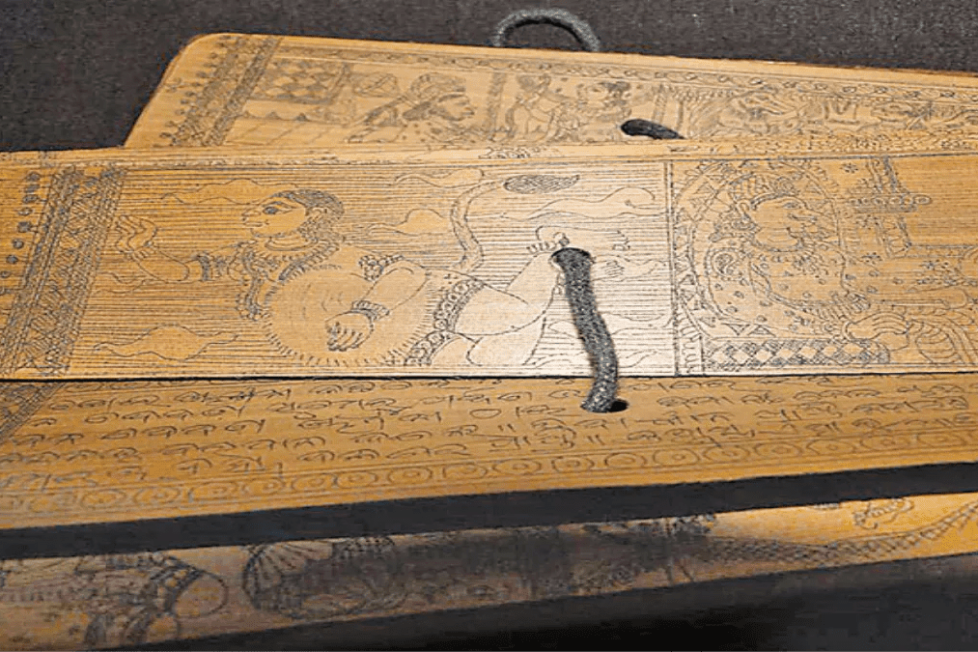How ‘Palm leaves’ have been the heritage of our culture, in which India’s glorious history is recorded?


It has been said that ‘History repeats itself’. This seems to be proved true once again. According to a news, bunkers of basalt stones are being built in Palitana and Dang of Gujarat to protect them by writing Jain texts on palm leaves. It is said that there is no effect of nuclear bombs, natural disasters in these bunkers. Although this innovation is not an innovation because in ancient times many scriptures of other religions were written on palm leaves. If we look back in history, it is known that the King-Maharaja used to get his time written on pieces of stone, pillars and palm leaves. Those memories are preserved in many places even today. There are many such evidences in the Sumerian and Egyptian civilizations, which tell the story of that time. Yes, sometimes it is difficult to understand the words written on them.
Books were prepared like this
In the Jataka tales, the word ‘panan’ (letter, page) is used only for the palm leaf. The oldest palm palm manuscript is a fragmentary copy of a play from the 2nd century AD, written in ink on palm leaves. In the Granth Bhandar of Jaisalmer, some ancient palm palm manuscripts are kept in the form of treasury. Palm leaves up to one meter long and up to ten centimeters wide are long-lasting, so they were used for text writing and illustration. These palm leaves were first dried, boiled or soaked and re-dried. Then the iron pen, which was also called Shalaka, was cut into the desired shape. The letters were being scraped off. Then by pouring Kajjal on them, these letters turned black and became readable. The entire manuscript was pierced by inserting pieces of bamboo about four centimeters or so from each end, i.e., as in today’s language binding heavy wooden covers were attached to the front and back and then braided with cords. Among the thousands of manuscripts written on palm leaves, there are some such that gold has been used for writing.
Heritage being preserved
The good thing is that almost everyone is sensitive towards this priceless heritage. That is why the talk of saving old manuscripts in different parts of the country and the world comes to the fore. About 400 years old manuscripts engraved on palm leaves of different languages have been kept with a family of Kanpur. The manuscript ‘Shri Sutra’ written on a palm leaf stamped by the Department of Archeology is about 475 years old. Similarly, the theology of Tamil language written on palm leaf with needle point is about 600 years old. Buddhist tales written in Kannada amaze, while their treasure contains a wonderful world of palm leaf manuscripts related to Sanatan, Dharmashastra, Jain scriptures, astrology and Ayurveda. Some of the texts written on the palm leaf decorated in these ancient heritage are still not deciphered and understanding and explaining about them is also a big task.
Similarly, the library of Sampurnanand Sanskrit Vishwavidyalaya of Varanasi, also known as Saraswati Bhavan, built in 1914, has a priceless treasure of three lakh books, oriental texts, rare manuscripts under one roof. 16,500 rare manuscripts brought from different parts of the country have been preserved here. A team of experts has been engaged to fix thousands of manuscripts written on palm leaves with scientific methods. This work is being done with the initiative of Infosys Foundation. They will be traditionally draped in red colored ‘kharwa’ cloths. Kharwa is a special type of cotton cloth on which books are wrapped by applying chemicals. It provides protection to books from insects and moisture. The library of Tamil Nadu has a world of more than 70,000 manuscripts. There is also a manuscript on a palm leaf which has been kept in the display section so that if one can understand this incomprehensible language.
Tale of an incredible family,
A 200-year-old ancient Mahabharata text written on palm leaves with a priest of Ghat Shila in Jharkhand is preserved as it is today. This book, preserved as a heritage for five generations, is read daily during worship. The family members say that their ancestors had brought the Mahabharata text, written on a palm leaf, which is in Oriya language, from Jagannathpuri in 1876. At that time the price of this Mahabharata book was five rupees.
DISCLAIMER: The author is solely responsible for the views expressed in this article. The author carries the responsibility for citing and/or licensing of images utilized within the text.
